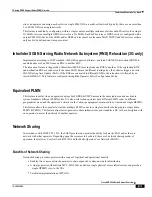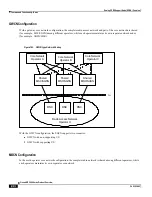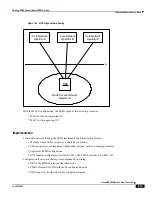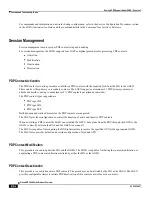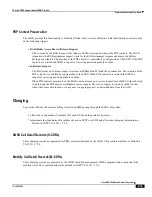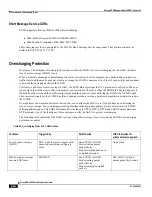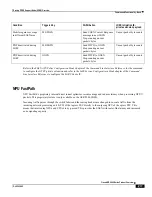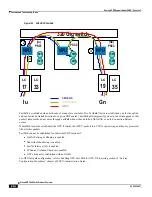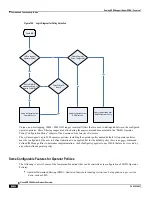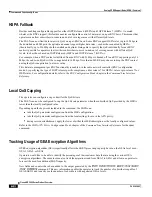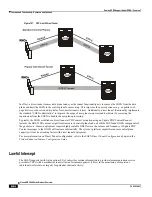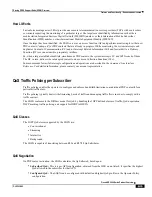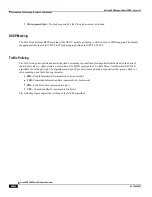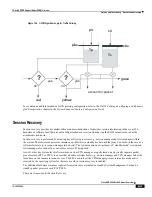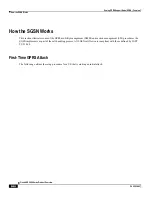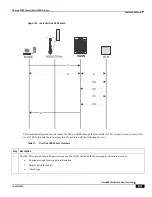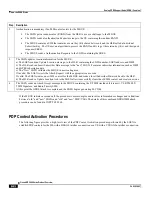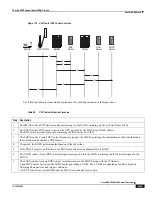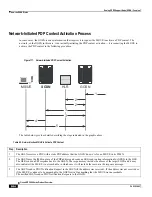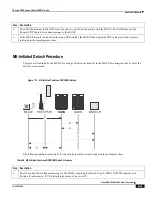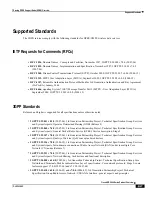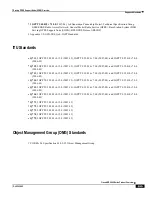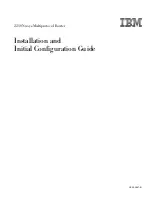
Serving GPRS Support Node (SGSN) Overview
Features and Functionality - Enhanced and Licensed ▀
Cisco ASR 5000 Series Product Overview ▄
OL-22938-02
How LI Works
Law enforcement agencies (LEAs) provide one or more telecommunication service providers (TSPs) with court orders
or warrants requesting the monitoring of a particular target. The targets are identified by information such as their
mobile station Integrated Services Digital Network (MSISDN) number, or their International Mobile Subscriber
Identification (IMSI) number, or their International Mobile Equipment Identity (IMEI-SV).
Once the target has been identified, the SGSN serves as an access function (AF) and performs monitoring for either new
PDP contexts (―camp-on‖) or PDP contexts that are already in progress. While monitoring, the system intercepts and
duplicates Content of Communication (CC) and/or Intercept Related Information (IRI) and forwards it to a Delivery
Function (DF) over an extensible, proprietary interface.
So, when a target establishes multiple, simultaneous PDP contexts, the system intercepts CC and IRI for each of them.
The DF, in turn, delivers the intercepted content to one or more Collection Functions (CFs).
Some commands for lawful intercept configuration and operations are described in the
Command Line Interface
Reference
. For detailed information, please contact your account representative.
QoS Traffic Policing per Subscriber
Traffic policing enables the operator to configure and enforce bandwidth limitations on individual PDP contextsf for a
particular traffic class.
Traffic policing typically deals with eliminating bursts of traffic and managing traffic flows in order to comply with a
traffic contract.
The SGSN conforms to the DiffServ model for QoS by handling the 3GPP defined classes of traffic, QoS negotiation,
DSCP marking, traffic policing, and support for HSDPA/HSUPA.
QoS Classes
The 3GPP QoS classes supported by the SGSN are:
Conversational
Streaming
Interactive
Background
The SGSN is capable of translating between R99 and R97/98 QoS attributes.
QoS Negotiation
On PDP context activation, the SGSN calculates the QoS allowed, based upon:
Subscribed QoS -
This is a per-APN configuration, obtained from the HLR on an Attach. It specifies the highest
QoS allowed to the subscriber for that APN.
Configured QoS -
The SGSN can be configured with default and highest QoS profiles in the Operator Policy
configuration.
Содержание ASR 5000 Series
Страница 1: ......
Страница 26: ......
Страница 48: ...New In Release 10 0 SCM Features Cisco ASR 5000 Series Product Overview OL 22938 02 ...
Страница 50: ......
Страница 58: ......
Страница 67: ...Product Service and Feature Licenses Default Licenses Cisco ASR 5000 Series Product Overview OL 22938 02 ...
Страница 68: ......
Страница 126: ......
Страница 138: ......
Страница 146: ......
Страница 218: ......
Страница 236: ......
Страница 356: ......
Страница 374: ......
Страница 422: ......
Страница 496: ......
Страница 572: ......
Страница 654: ......
Страница 700: ......
Страница 726: ......
Страница 784: ......
Страница 816: ......
Страница 839: ...Network Address Translation Overview How NAT Works Cisco ASR 5000 Series Product Overview OL 22938 02 ...
Страница 841: ...Network Address Translation Overview How NAT Works Cisco ASR 5000 Series Product Overview OL 22938 02 ...
Страница 844: ......
Страница 906: ......
Страница 926: ......
Страница 942: ......
Страница 943: ...Cisco ASR 5000 Series Product Overview OL 22938 02 Chapter 30 Technical Specifications ...
Страница 966: ......
Страница 967: ...Cisco ASR 5000 Series Product Overview OL 22938 02 Chapter 31 Safety Electrical and Environmental Certifications ...
Страница 972: ......

